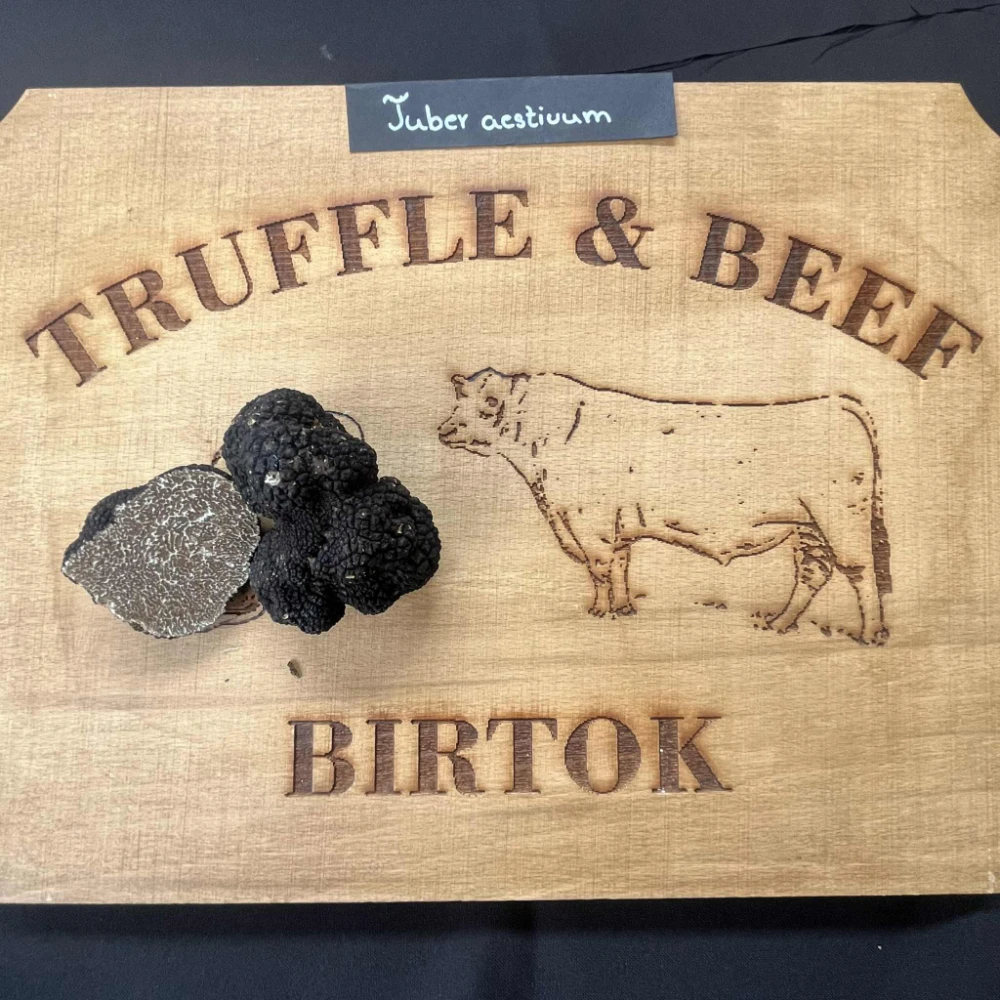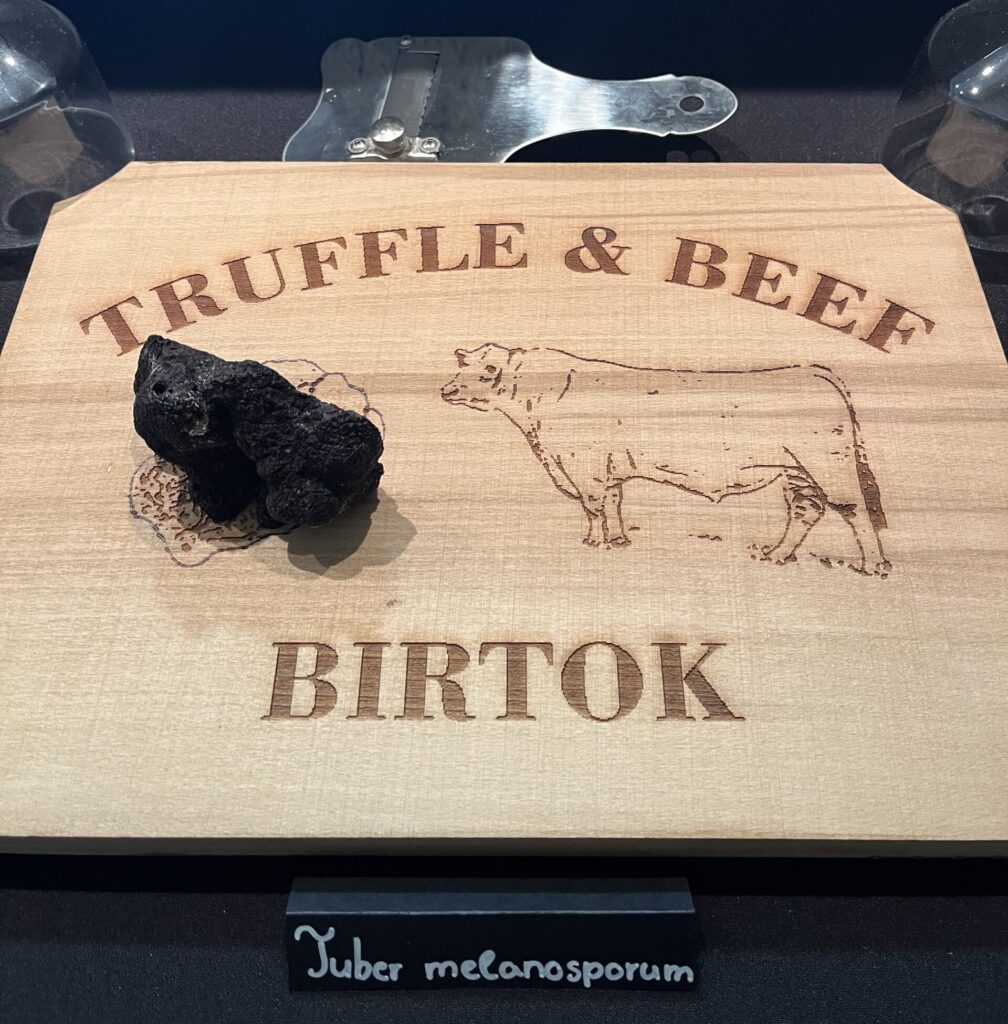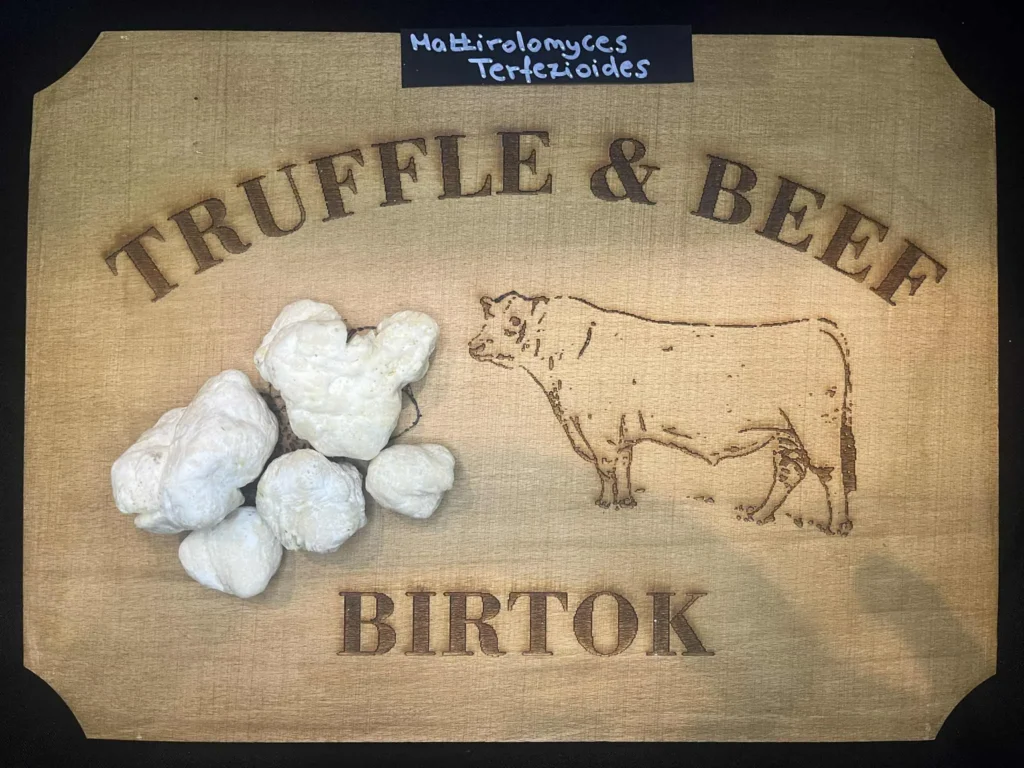TRUFFLE

Species of truffles
The truffle is one of nature's greatest tasty secrets, and can be found in Hungary's forests. On this page we present the most common and valuable truffle species, which you can collect in your own forest. Learn about the characteristics and taste of these rare mushrooms.
The truffle is not only a gastronomic speciality, but also a gift of nature, which we would like to introduce to our visitors.
Summer truffles
(Tuber Aestivum/Uncinatum)

The most abundant species in our forests. For us, it is one of the most popular, given its harvesting period of more than six months. During this time it shows us its many faces. During the summer, it has a delicate, delicate, earthy-nutty smell and taste reminiscent of boiled corn, and in the autumn it transforms into a more distinctive mushroom with a more characteristic flavour. The harmonious flavour of Aestivum pairs well with almost any dish.
Appearance:
Medium to large, dark brown-black tuber with a strongly warty outer surface. The inside is initially lighter brown, becoming darker brown in autumn, with dense, marbled veins.
Habitat:
It lives in deciduous forests, mainly oak, hazel and hornbeam. It grows in well-ventilated areas with calcareous soils.
Collection period:
May to December - the longest seasonal native species.
For us, it is the second most exciting mushroom, with a characteristic smell and taste that could take its place among the most expensive mushrooms.Its garlicky character makes it an excellent addition to meat dishes.
Appearance:
Medium sized, brown to dark brown tuber with a fine warty surface. Inside dark with light marbling.
Habitat:
It thrives mainly on river banks, stream valleys and wet soil.
Collection period:
From September to December.
Truffles with spores
(Tuber Macrosporum)

Winter truffles
(Tuber Brumale)

„Small is small, but mighty” goes the saying. For us, the winter truffle embodies this. Yet its small size makes it a match for the biggest. It has a slightly musky aroma and a taste similar to French truffles. It likes the wild boar parts.
Appearance:
Small to medium sized, smaller than a summer truffle, with black scales on the surface. The inside is greyish black with a fine white marbling.
Habitat:
It occurs in deciduous or mixed forests on calcareous soils, and is common in the root zone of oak, hazel and linden.
Collection period:
From November to March.
It is a rare delicacy found in few places in Hungary. Nowadays, serious experiments are being carried out on its cultivation. This species has also been planted on our property.It has a strong garlicy aroma. It is the most expensive mushroom to collect in Hungary.
Appearance:
Bright, yellowish-beige or ivory-coloured exterior, with a smooth, sometimes slightly wrinkled surface, and a light brown or yellowish-white interior with dense, marbled veins. Size varies from walnut to tennis ball size. The largest specimens are rare and extremely valuable.
Habitat:
It occurs mainly in the Istrian region (Croatia), but is also found in northern Italy and Hungary. It grows in deciduous forests on calcareous, well-ventilated soils, forming a symbiotic association mainly with oak, linden, willow and poplar.
Collection period:
From October to December.
Istrian truffle
(Tuber magnatum)

Tar-smelling truffles
(Tuber Mesentericum)

In our experience, it is the most divisive species, with a strong, almost offensive, tar-like smell and taste, but for those who like a truly distinctive flavour, it is a special treat.
Appearance:
Outer surface black or dark brown, with a strongly wrinkled, warty surface, with a pronounced basal cavity and a dark brown or purplish brown interior with white or lighter coloured marbled veins. Usually 2-5 cm in diameter, often irregular in shape.
Habitat:
It is found in deciduous forests on calcareous soils, mainly with oak, beech and hazel roots. It is native to central and southern Europe and also occurs in Hungary.
Collection period:
It runs from August to December.
French truffle
(Tuber Melanosporum)

One of the most expensive truffles. Not found in our country in natural habitats, but already in plantations. We are also experimenting with it. It has a very distinctive, intense, earthy, musky, slightly chocolatey smell that becomes more complex as it ripens. The flavour is deep, rich, slightly nutty and very aromatic. The essential oils are more intense when heated.
Appearance:
French truffles are round, irregularly shaped tubers. The outer skin (peridium) is dark brown or black, rough, with a warty surface.
Habitat:
It occurs in the Mediterranean, mainly in southern and central France.
Collection period:
It runs from November to March.
Sand truffles
(Mattirolomyces terfezoides)

It is different from other mushrooms in both appearance and interior design. Its colour is white, but it also has a different taste, as it is the only truffle that is sweet, making it an excellent base for desserts.
Appearance:
Its smooth, leathery surface is white. It has a root. The inside is initially white, then yellow, with no smell when unripe.
Habitat:
Found under white acacia, it prefers chalky sandy soils.
Collection period:
It runs from August to November.

Truffles and truffles - two flavours, one adventure, an unrivalled experience in nature
Menu:
- Copyright © 2025 All rights reserved